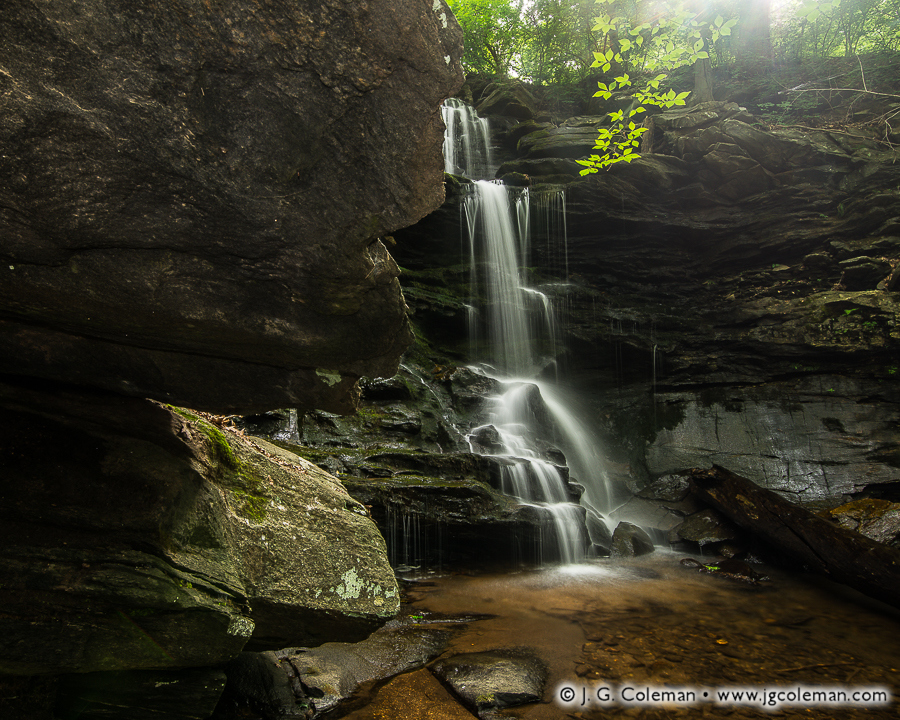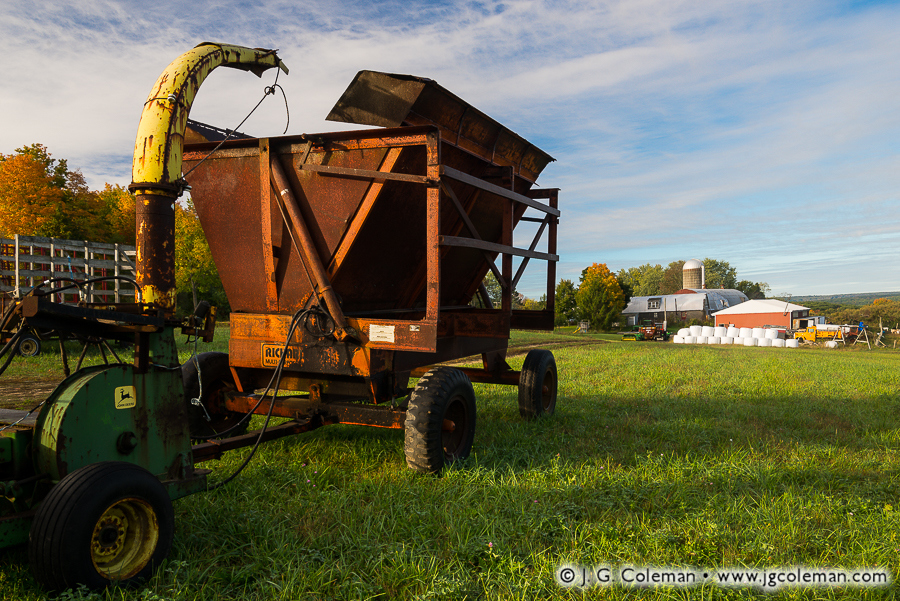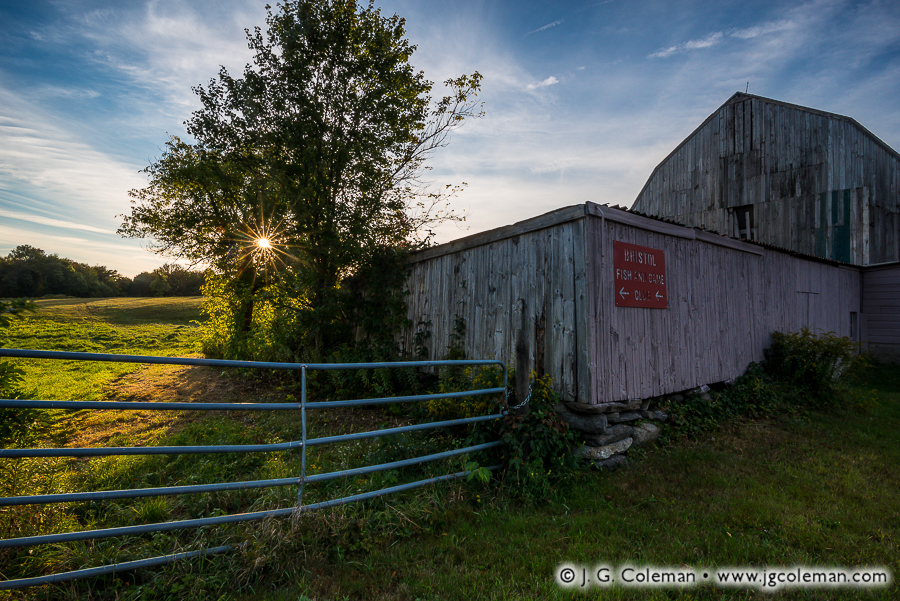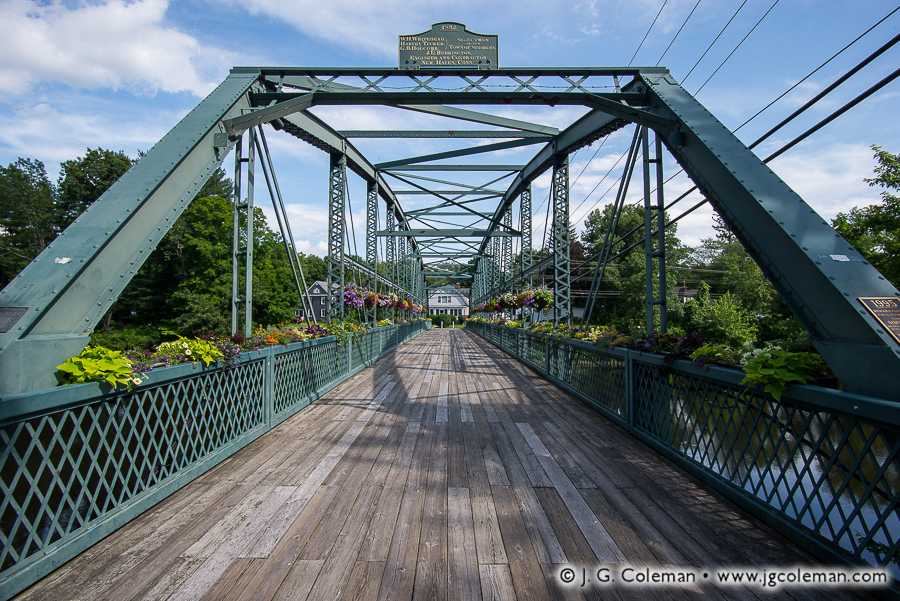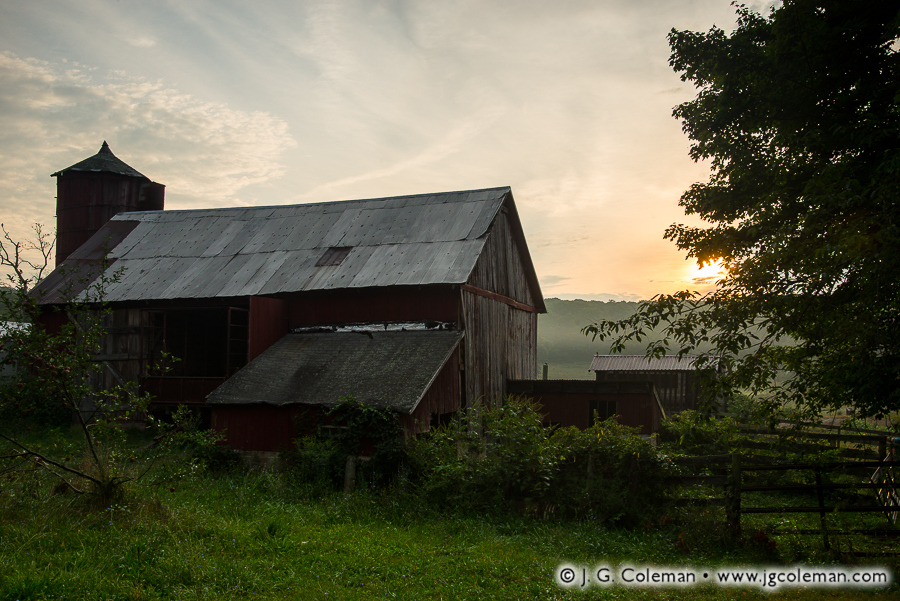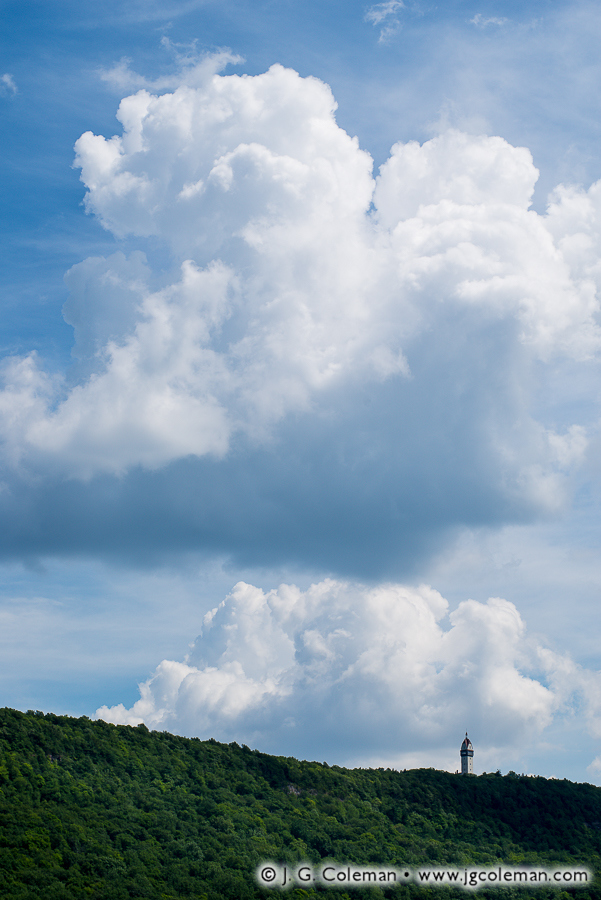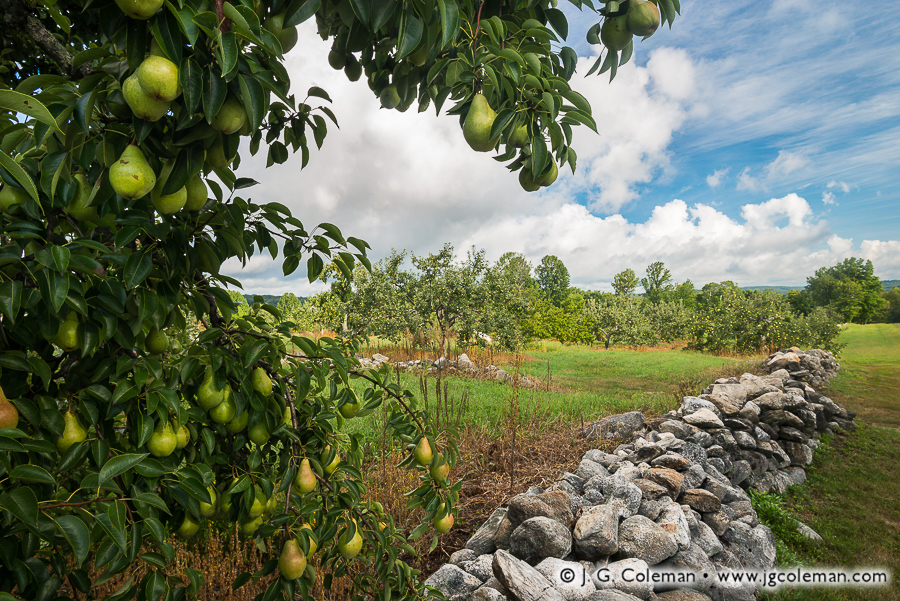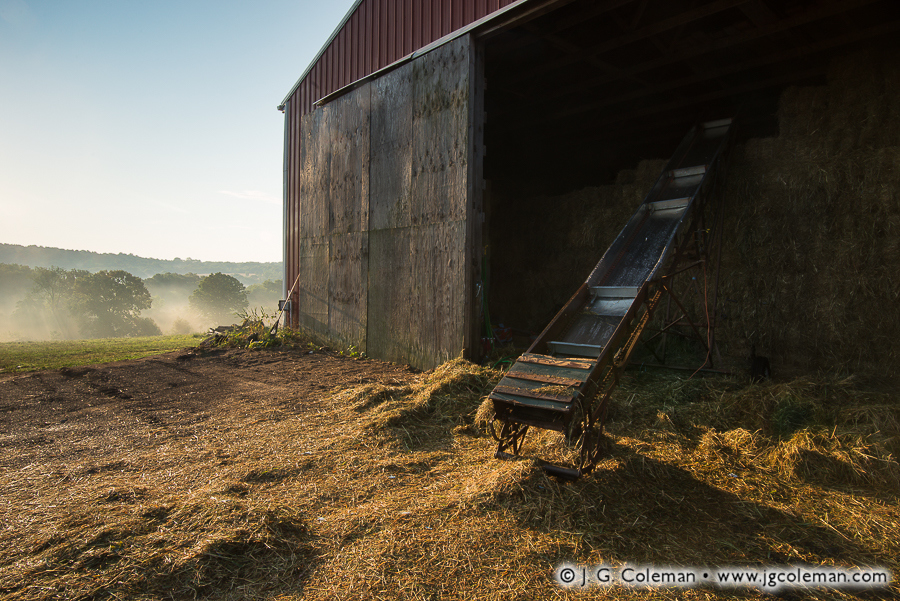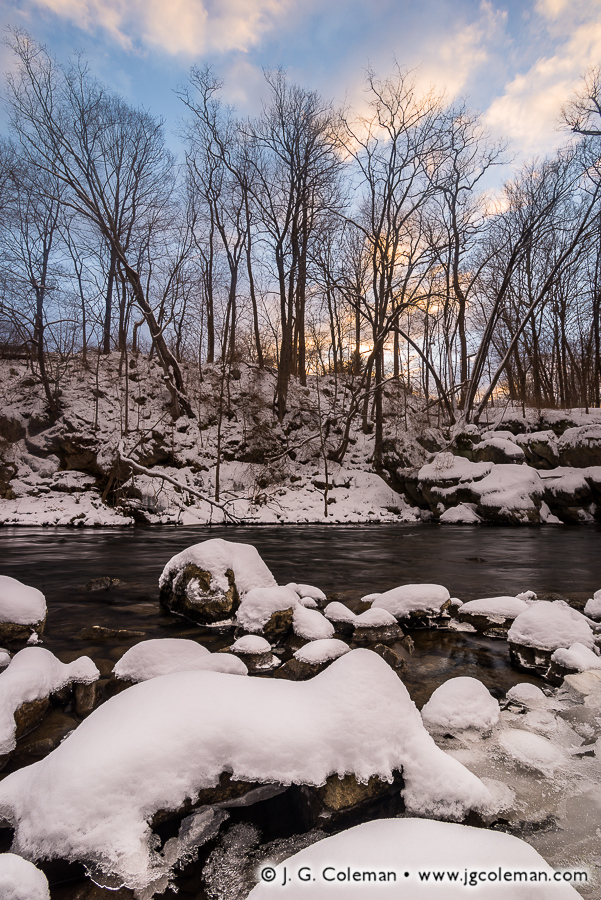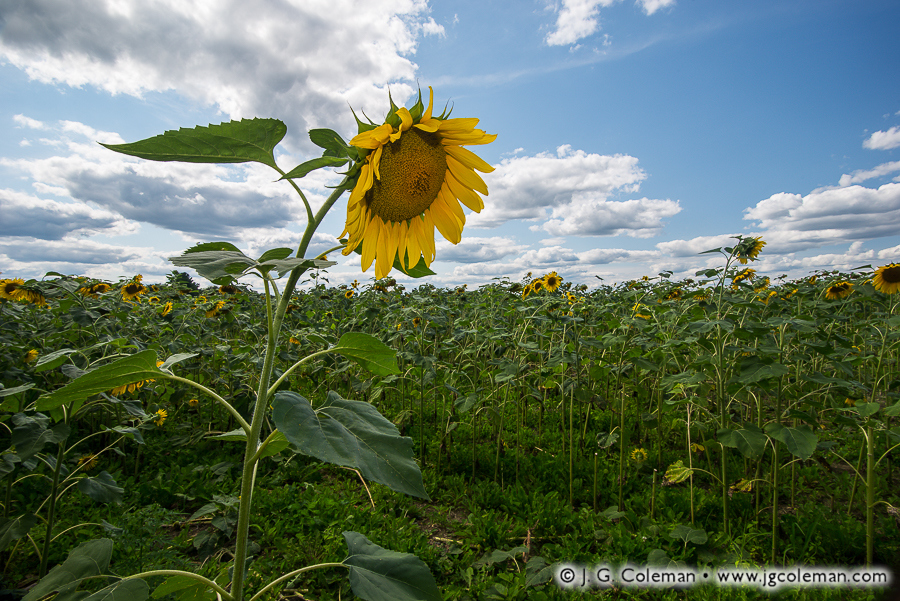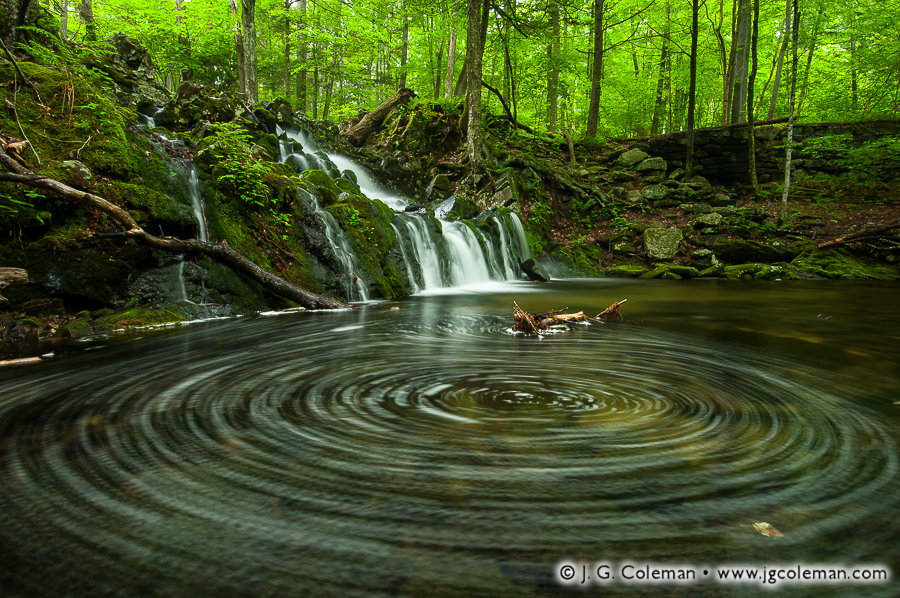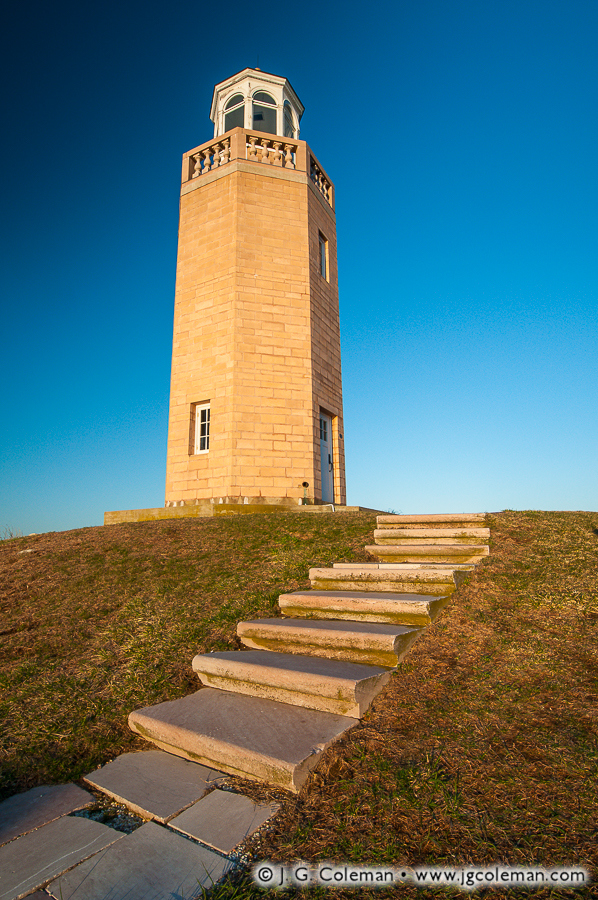
Shipyard Falls, Middle Haddam District of East Hampton, Connecticut
© 2015 J. G. Coleman
In my new piece, “Shipyard Abyss”, sunlight struggles to reach the depths of a dark ravine where Mine Brook plunges over tiers of jagged bedrock in an eager race to join the Connecticut River nearby.
Although I can’t find any formal name for this striking cataract in the Middle Haddam Historic District of East Hampton, it was once at the heart of a bustling shipyard and trading port throughout the 1700s and 1800s and the brook along which it is formed drove several mills. In those early times, before trains and tractor trailers made it possible to transport large amounts of goods over land, the entire navigable length of the Connecticut River was lined with thriving cities and maritime villages that served as crucial hubs for shipping and shipbuilding.
The advent of the railroad in the 1830s marked the beginning of the end for maritime culture along the Connecticut and, within a few decades, business began declining steadily. By the late 1800s, when the rail system in the state had grown to extensive proportions, commercial shipping traffic nearly vanished and the river grew quieter than it had been in centuries. These days, several of the smaller riverfront villages such as Middle Haddam are beautiful wooded hamlets which bear little resemblance to the noisy, frantic ports that they once were.
Purchase a Fine Art Print or Inquire About Licensing
Click here to visit my landing page for “Shipyard Abyss” to buy a beautiful fine art print or inquire about licensing this image.
Want to See More?
Be sure to check out all of my work from Shipyard Falls.

